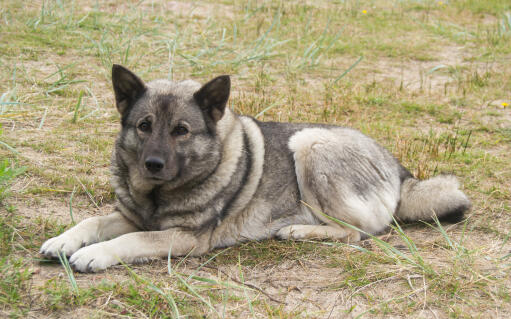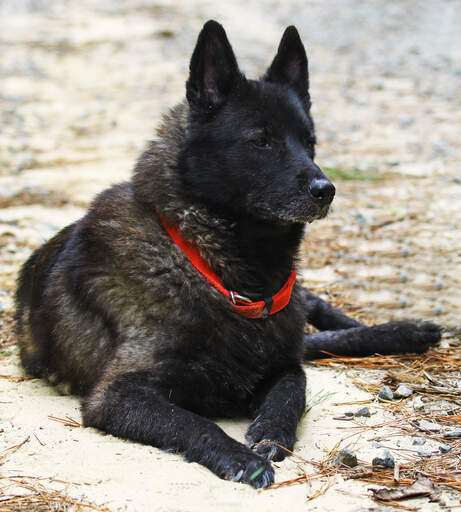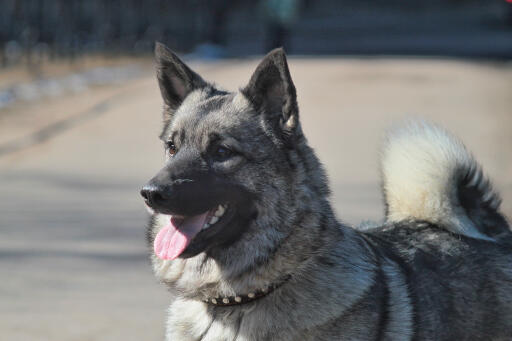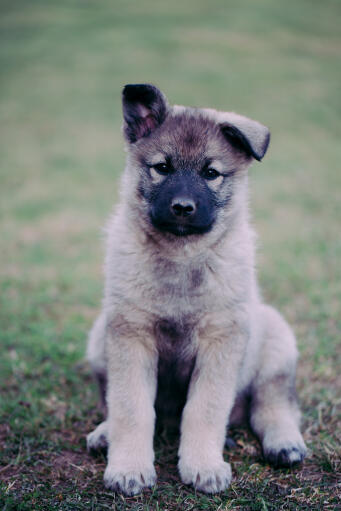Norwegian Elkhound Dogs





History
The Norwegian Elkhound belongs to the Spitz family of dogs and is not actually in the hound family. They were used to hunt elk (the European name for the moose - the American and European animals are very closely related). The word Elk comes from the Latin alces, a name that was also used for a now-extinct giant deer (the Irish Elk), which the ancestors of this dog may well have hunted 11,000 years ago. The breed was used to track and chase moose and keep them at bay until the hunters arrived . They were also commonly used to defend, guard and herd. The modern Elkhound breed has been around since the Viking times, at least 1,300 years ago.
Behaviour
The Norwegian Elkhound is a playful, high energy breed who love nothing more than being out and about. Certainly not the ideal choice for the less-active owner. They have immense stamina and could run for miles and miles on end without tiring. They make great running/jogging partners. They will be fine with children if raised with them from a young age. The same applies for other pets. If properly socialised they will also get on fine with strangers. They enjoy being close to their family and will want to take part in every family activity that may be going on. They are well-suited for a family that enjoys long walks/hikes through the countryside. These dogs have a need to run about and explore. They are smart, independent thinkers who will need a chance to burn off energy. They are constantly alert and a long walk will help keep them mentally stimulated as well as physically fit and healthy. They are scent dogs and will need to be walked in a safe area or on a leash. ONce they have gotten hold of a scent, they could go off in pursuit of it for hours and hours. If they get a decent walk and a chance to burn off energy, they will be docile and calm within the home. They will become destructive if bored.
Elkhound learn quite quickly when being trained, though a firmer (yet still kind!) approach will be needed to stop them from seeing themselves as boss. Keeping training sessions short, with lots of food related reward will help keep them interested. They will sometimes try to push you, but be sure to make it clear who is boss with consistent training and this will soon cease to be a problem. They can get possessive of food and toys, so taking toys away from them from a young age will help them get used to the idea of sharing. They are naturally protective of those around them and see themselves as equal to the family.
Their long, dense coats are specially adapted for winter conditions, so it’s no surprise that they prefer cooler weather. Their coat will need brushing a few times per week in order to keep it looking fresh and clean.
Temperament
Norwegian Elkhounds are a boisterous and bold breed. Always up for a game, these dogs have heaps of energy and an air of self-confidence around them. They are most friendly towards strangers and training may be needed to stop them from jumping up and licking any visitor’s face. The breed will be ok with other animals if raised with them, though they do have a high prey drive.
Health Problems
This breed can be prone to Canine Hip Dysplasia, Luxating Patella, Kidney Disease, Allergies, some Cancers, Heart Disease, Progressive Retinal Atrophy and Epilepsy.
Breed Details
- Status: Common
- Life Expectancy: 12 - 14 years
- Weight: 48 - 55 lbs
- Height: 19.5 - 20.5"
- Rare: No
- Coat: Medium
- Grooming Requirements: More than once per week
- Town or Country: Either
- Minimum Home Size: Large House
- Minimum Garden Size: Large Garden
- Breed Type: Hound
- Size: Large
- Energy Level: High
- Exercise Required: Up to 1 hour








